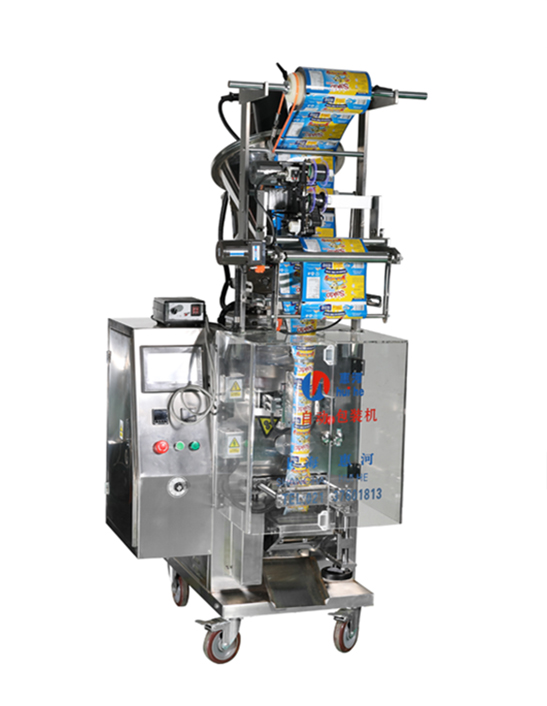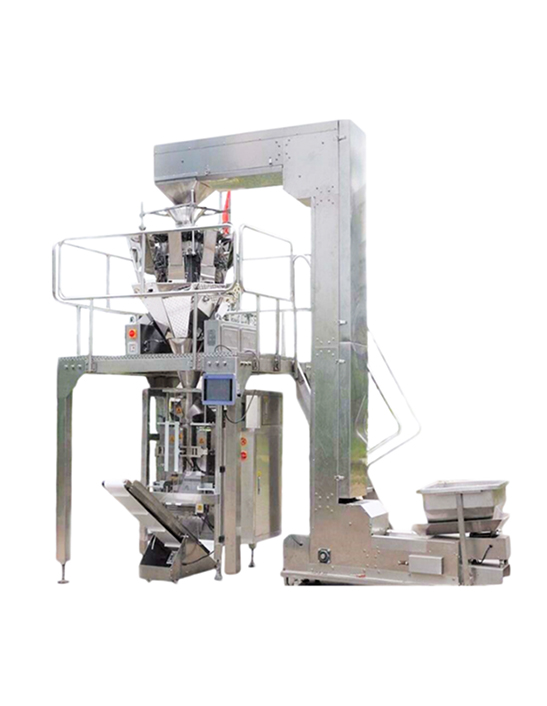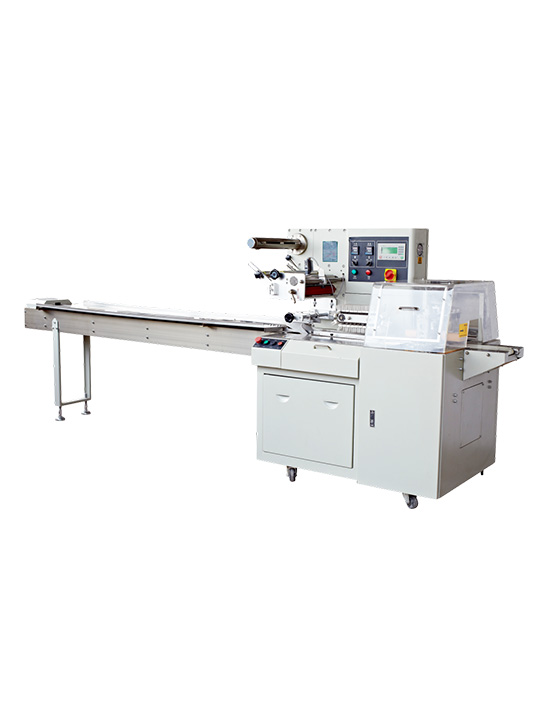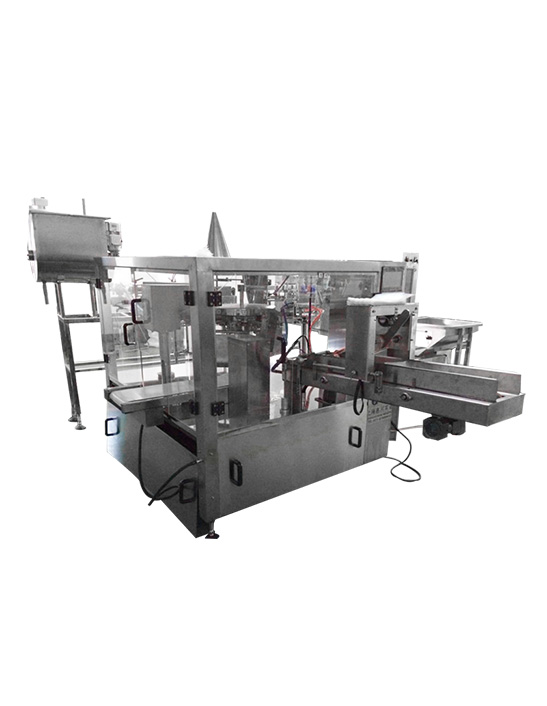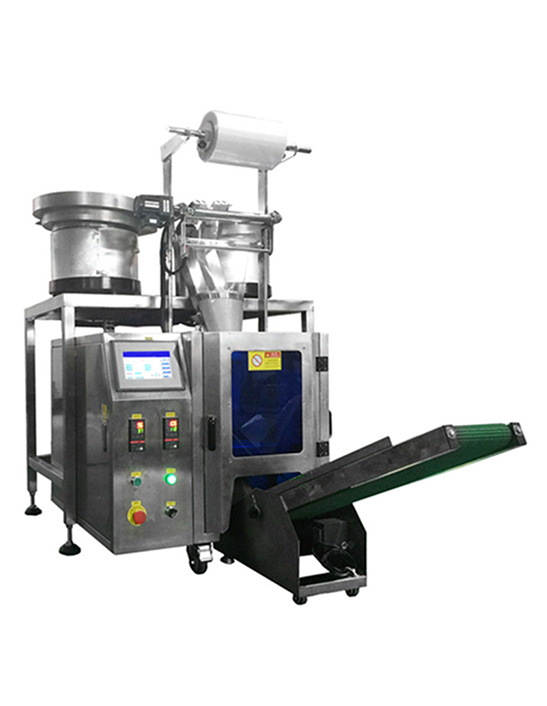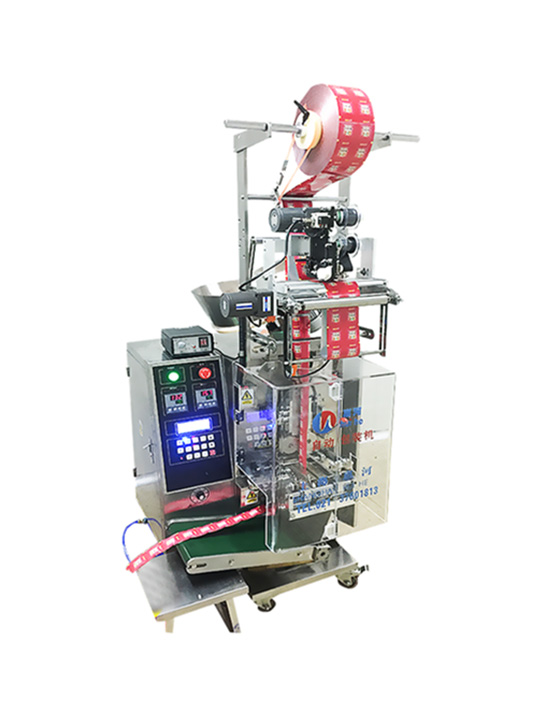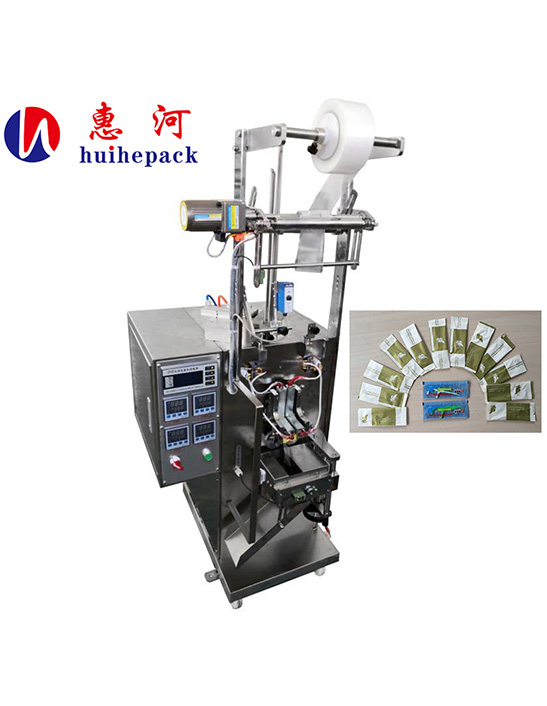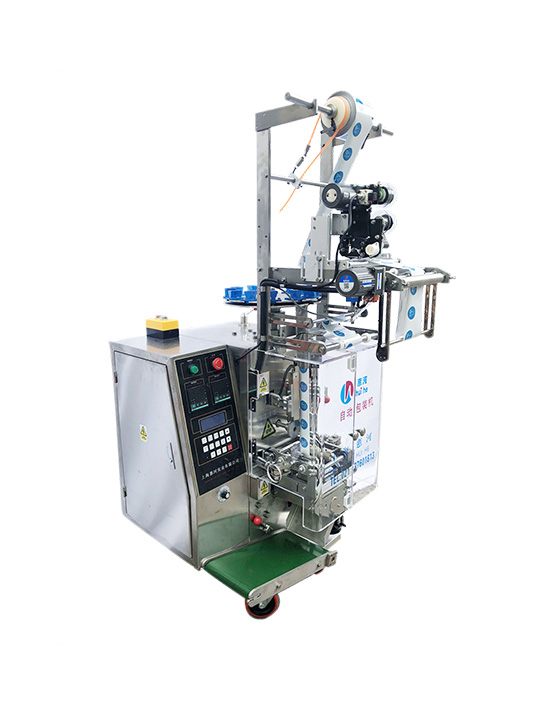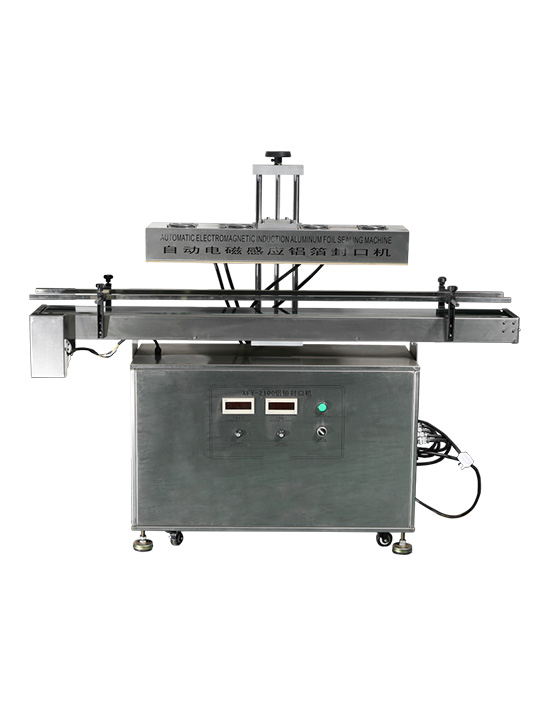1.Introduction to Packaging Machines
In today's fast-paced industrial landscape, the efficiency and precision of production lines are paramount. At the heart of this operational excellence lies the often-unsung hero: the packaging machine. These innovative pieces of packaging equipment are indispensable for businesses across virtually every sector, ensuring products are prepared for market quickly, safely, and attractively.
1.1 What is a Packaging Machine?
A packaging machine is an automated or semi-automated system designed to perform one or more packaging functions. These functions can range from filling containers with products to sealing, labeling, wrapping, and even preparing products for shipment. Essentially, any machinery that aids in enclosing or protecting products for distribution, storage, sale, and use falls under the umbrella of packaging machinery. The primary goal of a packaging machine is to streamline the packaging process, making it faster, more accurate, and less reliant on manual labor, thereby achieving significant packaging automation.
1.2 Brief History and Evolution
The concept of packaging has existed for centuries, but the mechanization of this process is a relatively modern development. Early packaging was entirely manual, labor-intensive, and prone to inconsistencies. The industrial revolution laid the groundwork for automation, but it wasn't until the late 19th and early 20th centuries that dedicated packaging machines began to emerge. Initially, these were simple devices for filling and capping.
The mid-20th century saw significant advancements with the introduction of more complex systems like the vertical form fill seal (VFFS) machines, which revolutionized the bagging of granular and powdered products. The latter half of the 20th century and the dawn of the 21st have witnessed an explosion in sophisticated automatic packaging machine technology. Today, modern packaging machines incorporate advanced robotics, sensor technology, and software integration, reflecting the ongoing drive towards greater efficiency and adaptability in manufacturing.
1.3 Importance of Packaging Machines in Modern Industry
The role of packaging machines in modern industry cannot be overstated. They are critical for several reasons:
Mass Production Capability: Manual packaging simply cannot keep pace with the demands of mass production. Automatic packaging solutions enable businesses to process thousands of products per hour, meeting high market demand efficiently.
Cost Reduction: By automating repetitive tasks, packaging machines significantly reduce the need for manual labor, leading to substantial savings in operational costs.
Consistency and Quality: Machines deliver a level of precision and consistency that is unattainable through manual methods. This ensures uniform product presentation, accurate filling, and secure sealing, enhancing overall product quality and consumer trust.
Product Protection: Proper packaging, facilitated by these machines, protects products from contamination, damage, and spoilage during transit and storage, ultimately extending shelf life.
Brand Presentation: Well-packaged products stand out on shelves. Packaging machines contribute to attractive, professional, and consistent branding, which is crucial for market appeal and consumer recognition.
Hygiene and Safety: Especially in industries like food packaging and pharmaceutical packaging, automated systems minimize human contact with products, ensuring higher levels of hygiene and safety.
In essence, packaging automation is no longer a luxury but a necessity for businesses aiming to remain competitive, efficient, and responsive to market demands.
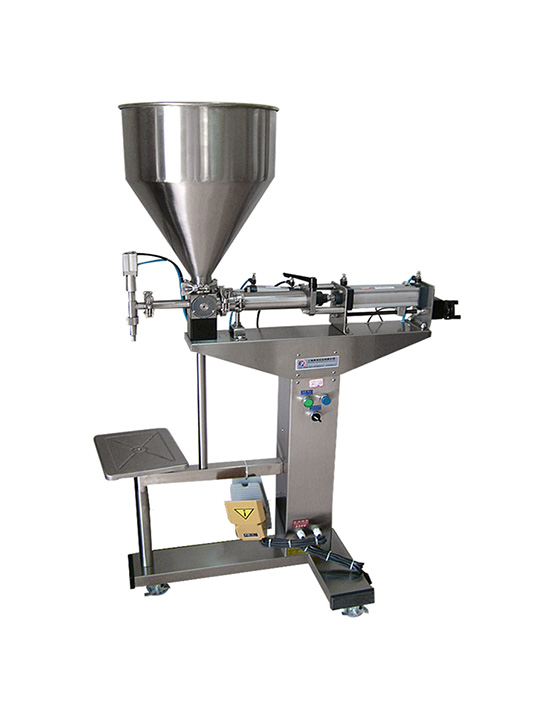
2. Types of Packaging Machines
The world of packaging machinery is incredibly diverse, with a specialized machine for nearly every step of the packaging process. Understanding the different types of packaging equipment is crucial for optimizing production lines across various industries, from food packaging to pharmaceutical packaging, cosmetic packaging, and beverage packaging.
2.1 Filling Machines
Filling machines are fundamental to any packaging operation, designed to accurately dispense a specific quantity of product into a container. They vary widely based on the product's physical state.
2.1.1 Liquid Filling Machines
These machines are engineered to handle a broad spectrum of liquids, from thin, free-flowing liquids like water and juice to viscous products such as oils, sauces, and creams. Common types include:
Volumetric Fillers: Dispense a precise volume of liquid.
Level Fillers: Fill containers to a consistent visual level, often used for clear bottles where appearance is critical.
Piston Fillers: Ideal for thick, high-viscosity liquids or products with small particulates.
Gravity Fillers: Suitable for thin to medium-viscosity liquids, relying on gravity to fill containers.
2.1.2 Powder Filling Machines
Designed for handling powdered products, these machines require careful engineering to manage dust and ensure accurate dosing. They are widely used for products like flour, spices, coffee, and pharmaceutical powders. Key types include:
Auger Fillers: Use a rotating auger screw to dispense a precise volume or weight of powder.
Vibratory Fillers: Use vibration to settle powders and dispense them by weight or count.
2.1.3 Granule Filling Machines
These machines are specialized for dispensing granular or small, free-flowing solid products such as rice, sugar, nuts, seeds, and certain chemicals. Common methods include:
Volumetric Cup Fillers: Measure product by volume using adjustable cups.
Multihead Weighers: Accurately weigh products using multiple weigh hoppers, ideal for achieving high speeds and precision.
2.2 Form-Fill-Seal (FFS) Machines
Form-Fill-Seal (FFS) machines are highly efficient automatic packaging machine systems that create a package, fill it with product, and seal it, all in one continuous operation. They significantly reduce the need for pre-formed packaging materials.
2.2.1 Vertical Form-Fill-Seal (VFFS) Machines
A VFFS machine forms a bag from a roll of film, fills it vertically with product, and then seals the bag. This type is extremely common for bagging snack foods, coffee, frozen foods, powders, and granular products. The film is pulled over a forming collar, creating a tube, which is then sealed vertically and horizontally to create individual bags.
2.2.2 Horizontal Form-Fill-Seal (HFFS) Machines
Also known as horizontal flow wrappers, these machines form a pouch or bag horizontally, fill it, and then seal it. HFFS machines are typically used for single items or groups of products, such as confectionery bars, baked goods, medical devices, and hardware. The product is placed directly onto the film, which is then folded around it and sealed.
2.3 Capping Machines
Capping machines are essential for securing containers with various types of caps, ensuring product integrity and preventing leaks or contamination. They are crucial for beverage packaging, pharmaceutical packaging, and cosmetic packaging. Types include:
Screw Cappers: Apply and tighten screw caps, common for bottles and jars.
Snap Cappers: Press-fit caps onto containers.
ROPP (Roll-On Pilfer Proof) Cappers: Form a cap from an aluminum shell directly onto the bottle, creating a tamper-evident seal.
Chuck Cappers: Use a chuck to grip and apply caps, offering high precision.
2.4 Labeling Machines
Labeling machines apply labels to products or containers for identification, branding, and regulatory compliance. They can handle various label types (pressure-sensitive, shrink sleeve, glue-applied) and apply them to different container shapes and materials. Key types include:
Front/Back Labelers: Apply labels to the front and back of containers.
Wrap-Around Labelers: Apply a single label that wraps around the circumference of a container.
Top/Bottom Labelers: Apply labels to the top or bottom surface of a product or package.
Shrink Sleeve Labelers: Apply heat-shrinkable labels that conform to the shape of the container when heated.
2.5 Case Erectors and Sealers
These machines handle the secondary and tertiary packaging stages.
Case Erectors: Automatically unfold flat cardboard blanks into erect boxes or cases, forming the bottom flaps and preparing them for filling. This is a critical step in case packing.
Case Sealers: After cases are filled, these machines automatically apply tape or hot melt glue to seal the top and/or bottom flaps, ensuring secure transportation.
2.6 Palletizers
Palletizers are packaging automation solutions designed to stack cases, bags, or other packages onto pallets in a predetermined pattern, preparing them for storage and shipment. This significantly reduces manual labor and improves stacking consistency.
Robotic Palletizers: Utilize robotic arms for flexible and complex stacking patterns.
Conventional Palletizers: Use mechanical systems to layer products onto pallets, often at high speeds for uniform products.
2.7 Flow Wrapping Machines
Also known as horizontal flow wrappers (as mentioned in HFFS), these machines are versatile for individually wrapping products. They create a sealed pack around items like bakery goods, candies, or small parts, offering protection and often contributing to shelf-life extension.
2.8 Blister Packaging Machines
Blister packaging machines are commonly used in the pharmaceutical packaging, medical device, and consumer goods industries. They form a cavity (blister) from a plastic film, fill it with the product, and then seal it with a lidding material (e.g., foil or paperboard), creating individual, sealed compartments that are tamper-evident and protect the product.
2.9 Vacuum Packaging Machines
Vacuum packaging machines remove air from a package before sealing it. This process significantly extends the shelf life of perishable products by inhibiting the growth of aerobic bacteria and preventing oxidation. They are widely used for food packaging, especially meat, cheese, and prepared meals, as well as for protecting sensitive electronics from moisture and dust.
3. Benefits of Using Packaging Machines
Investing in packaging machines is a strategic decision that delivers a multitude of advantages beyond mere convenience. Modern packaging automation solutions profoundly impact efficiency, cost-effectiveness, product quality, and market appeal, making them indispensable for businesses aiming for growth and sustainability.
3.1 Increased Production Speed and Efficiency
Perhaps the most immediate and impactful benefit of implementing automatic packaging machine technology is the dramatic increase in production speed. Manual packaging processes are inherently slow, prone to bottlenecks, and limited by human capacity. Packaging machines, however, can operate continuously at high speeds, handling thousands of products per hour. This enables businesses to meet higher demand, accelerate time-to-market for new products, and significantly boost overall throughput, directly translating to higher revenue potential.
3.2 Reduced Labor Costs
While there's an initial investment in packaging equipment, the long-term savings in labor costs are substantial. Packaging machines reduce the need for a large workforce dedicated to repetitive packaging tasks. A single operator can often oversee multiple machines, freeing up personnel to be redeployed to other value-added activities within the company. This not only cuts down on wages and benefits but also minimizes expenses related to hiring, training, and managing a large manual labor force.
3.3 Improved Packaging Accuracy and Consistency
Human error is an inevitable part of manual operations. Packaging machines eliminate this variability, ensuring precise and consistent packaging every time. Whether it's accurately filling a container, securely sealing a pouch, or precisely applying a label, machines perform these tasks with unerring accuracy. This consistency is vital for maintaining product quality, adhering to regulatory standards (especially in pharmaceutical packaging), and upholding brand image. Consumers expect uniform products, and packaging machines deliver just that.
3.4 Enhanced Product Protection and Shelf Life
A primary function of packaging is to protect the product from external elements, damage, and contamination. Packaging machines are engineered to create secure seals, provide appropriate barriers (e.g., in vacuum packaging machines), and maintain specific conditions to preserve product integrity. For perishable goods, proper sealing and, in some cases, the removal of oxygen (as with vacuum packaging) can significantly extend shelf life, reduce spoilage, and maintain freshness, especially critical in food packaging. This enhanced protection reduces product loss and ensures that products reach consumers in optimal condition.
3.5 Better Presentation and Branding
The aesthetic appeal of a product's packaging plays a crucial role in consumer purchasing decisions. Packaging machines contribute immensely to professional and attractive product presentation. They ensure that labels are applied straight, wraps are tight, and packages are uniformly shaped and sealed. This level of precision creates a polished, high-quality appearance that reinforces brand identity and builds consumer trust. In competitive markets, superior packaging can be a significant differentiator, enhancing a product's perceived value and strengthening branding efforts.
3.6 Minimizing Waste
Manual packaging often leads to material waste due to inconsistencies, errors, and inefficiencies. Packaging machines, with their precise control over material usage, significantly minimize waste. They are designed to use exact amounts of film, labels, or other packaging materials for each product, reducing scrap and optimizing material consumption. This not only lowers operational costs but also aligns with growing industry trends towards sustainable practices, making businesses more environmentally responsible by reducing their material footprint.
4. Applications of Packaging Machines
The versatility and efficiency of packaging machines make them indispensable across a vast array of industries. From protecting consumables to safeguarding sensitive medical products, packaging automation is a foundational element for ensuring product quality, safety, and market readiness.
4.1 Food and Beverage Industry
The food and beverage industry is arguably one of the largest users of packaging equipment, driven by the need for hygiene, shelf-life extension, and high-volume production.
Filling machines (liquid, powder, granule) are crucial for beverages, dairy products, grains, spices, and snacks.
VFFS machines are ubiquitous for bagging chips, coffee, cereals, and frozen foods.
Flow wrappers are used for bakery items, candy bars, and other individually wrapped snacks.
Capping machines seal bottles and jars for everything from sauces to soft drinks.
Vacuum packaging machines are vital for meats, cheeses, and prepared meals to extend freshness and prevent spoilage.
Case packing solutions then prepare these finished products for distribution.
4.2 Pharmaceutical Industry
In the pharmaceutical industry, precision, sterility, and tamper-evidence are paramount. Packaging machines play a critical role in ensuring product integrity and patient safety.
Filling machines are used for precise dosing of liquids, powders, and tablets into vials, bottles, and blister packs.
Blister packaging machines are widely employed for unit-dose medications, offering protection and clear identification.
Capping machines secure medicine bottles, often with child-resistant or tamper-evident features.
Labeling machines apply crucial dosage, warning, and identification information with extreme accuracy.
Case erectors and sealers prepare bulk shipments of pharmaceuticals, maintaining strict quality control.
4.3 Cosmetics Industry
The cosmetics industry relies on packaging machines to deliver aesthetic appeal, product integrity, and precise application.
Liquid filling machines handle creams, lotions, and perfumes, often with precise volumetric control to ensure consistent product levels in aesthetically pleasing containers.
Capping machines are essential for securing various types of caps on bottles and jars, from pump dispensers to screw caps.
Labeling machines are critical for applying high-quality, often decorative, labels that contribute significantly to brand image.
Cartoners place primary cosmetic containers into retail cartons.
Flow wrappers may be used for individually packaging items like soap bars or gift sets.
4.4 Chemical Industry
The chemical industry requires robust packaging equipment capable of handling a wide range of substances, from corrosive liquids to fine powders, often with a focus on safety and containment.
Filling machines are used for various chemicals, lubricants, paints, and cleaning products, often with specialized materials of construction to resist corrosion.
Capping machines ensure secure closure, preventing leaks and spills.
Labeling machines apply critical hazard warnings and product information.
Palletizers are essential for safely stacking heavy drums, bags, or boxes of chemicals for storage and transport.
Specialized systems for hazardous materials ensure safe and compliant packaging processes.
4.5 Other Industries
Beyond these major sectors, packaging machines find extensive applications in numerous other industries:
Automotive: Packaging spare parts, lubricants, and aftermarket products.
Electronics: Protecting sensitive components from static, moisture, and physical damage using specialized wraps and sealed packaging.
Textiles: Bagging apparel, linens, and other soft goods.
Hardware and DIY: Packaging fasteners, tools, and small parts, often utilizing blister packaging or bagging solutions.
Agriculture: Bagging seeds, fertilizers, and animal feed using large-scale VFFS machines or bagging lines.
Across all these sectors, the common goal is to leverage packaging automation to enhance efficiency, reduce costs, maintain quality, and prepare products optimally for their journey from production line to consumer.
5. Factors to Consider When Selecting a Packaging Machine
Choosing the right packaging machine is a critical decision that can significantly impact a company's operational efficiency, profitability, and future growth. It's not a one-size-fits-all scenario; rather, it requires a thorough evaluation of various factors to ensure the selected packaging equipment perfectly aligns with specific business needs. This strategic process is key to effective packaging machine selection.
5.1 Product Type and Characteristics
The nature of the product itself is the single most important factor. Different product characteristics demand different machine capabilities.
Physical State: Is the product a liquid, powder, granule, solid, or paste? This dictates the type of filling machine required (e.g., liquid filler, auger filler for powders, multihead weigher for granules).
Viscosity/Flowability: For liquids, is it thin and free-flowing or thick and viscous?
Size and Shape: For solid products, the dimensions and shape will influence choices like flow wrapper types or feeding systems for case packing.
Fragility: Delicate items may require gentle handling systems or specific cushioning within the package.
Temperature: Products that need to be filled hot or cold will require machines built with appropriate materials and temperature controls.
Corrosiveness/Stickiness: Certain chemicals or food products might require stainless steel or specialized coatings for machine parts to prevent corrosion or sticking.
5.2 Packaging Material
The material and format of your packaging play a crucial role in machine compatibility.
Type of Container: Are you using bottles, jars, pouches, bags, cartons, or blister packs? This immediately narrows down choices for capping machines, VFFS machines, HFFS machines, or blister packaging machines.
Material Properties: Is it flexible film, rigid plastic, glass, metal, or paperboard? Each material reacts differently to heat, pressure, and sealing methods. For instance, a VFFS machine relies on heat-sealable film, while a case erector works with corrugated cardboard.
Closure Type: Screw caps, snap-on caps, corks, or heat seals each require a specific type of capping machine or sealing mechanism.
5.3 Production Volume
The required output capacity is a major determinant of the machine's level of automation and speed.
Low Volume: For start-ups or niche products, semi-automatic packaging equipment might suffice, offering a lower initial investment.
Medium Volume: A balance between automation and cost-effectiveness is often sought, with single-lane automatic packaging machine setups.
High Volume: Large-scale operations demand fully automatic packaging machine systems, often with multiple lanes or high-speed capabilities, such as multi-head weighers feeding VFFS machines or high-speed palletizers. Over-specifying can lead to unnecessary costs, while under-specifying will create bottlenecks.
5.4 Automation Level
The desired level of packaging automation directly impacts both cost and labor requirements.
Manual: Requires significant human intervention for every step. Cheapest upfront but highest labor cost.
Semi-Automatic: Requires an operator to load products or containers, but the machine performs the packaging task (e.g., a single operator feeding bottles into a capping machine). Balances human control with machine speed.
Fully Automatic: Requires minimal human intervention once set up, handling continuous feeding, filling, sealing, and conveying. Highest upfront cost but lowest long-term labor costs and highest efficiency. This is often the goal for complex lines involving case erectors, labeling machines, and palletizers.
5.5 Budget
Financial constraints are a practical reality for any investment.
Initial Purchase Cost: This is the immediate expense of buying the machine.
Operational Costs: Include energy consumption, spare parts, and consumables (films, labels, caps).
Maintenance Costs: Regular servicing and potential repairs.
Total Cost of Ownership (TCO): It's crucial to look beyond the sticker price and consider the TCO over the machine's lifespan, which includes all the above factors. A cheaper machine might have higher operational or maintenance costs, making a more expensive, efficient model a better long-term investment.
5.6 Space Constraints
The physical footprint of the packaging machine and its integration into the existing production line are vital.
Available Floor Space: Large, complex automatic packaging machine lines require significant floor area.
Layout: Consider how the machine will integrate with upstream (e.g., processing) and downstream (e.g., warehousing) equipment.
Accessibility: Ensure there's enough space for operators, maintenance personnel, and material replenishment. A compact flow wrapper might fit where a full VFFS machine line would not.
5.7 Maintenance and Support
Reliability and longevity of the packaging equipment depend heavily on ongoing maintenance and manufacturer support.
Ease of Maintenance: How easy is it to clean, troubleshoot, and perform routine maintenance on the machine?
Availability of Spare Parts: Are spare parts readily available from the manufacturer or third-party suppliers?
Technical Support: What kind of technical support does the manufacturer offer (on-site, remote, training)?
Service Network: Does the manufacturer have a local or regional service network? Reliable after-sales service is crucial to minimize downtime and ensure continuous operation of your packaging automation solution.
6. Top Packaging Machine Manufacturers
Identifying the "top" packaging machine manufacturers can be subjective, as the best choice often depends heavily on the specific industry, product, required automation level, and budget. However, the global market for packaging machinery is robust, featuring a range of companies from large, multinational conglomerates offering comprehensive solutions to specialized manufacturers focusing on niche applications.
Instead of listing specific company names, which can quickly become outdated and may not reflect the best fit for every unique need, it's more beneficial to understand how to research and identify leading manufacturers relevant to your requirements. When looking for packaging equipment suppliers, consider the following:
Specialization: Some manufacturers excel in specific areas, such as VFFS machines, flow wrappers, filling machines for particular product types (e.g., liquid or powder), or complete case packing lines.
Industry Focus: Certain companies have deep expertise in specific sectors like food packaging, pharmaceutical packaging, or beverage packaging, understanding the unique regulatory and operational demands of those environments.
Technological Innovation: Look for manufacturers known for integrating the latest trends, such as packaging automation, robotics, IoT, and sustainable design.
Global Presence and Support: For larger operations or those with international aspirations, a manufacturer with a strong global footprint and robust after-sales service network is crucial for maintenance and support.
Customization Capabilities: If your product or packaging has unique requirements, a manufacturer capable of providing custom-engineered packaging machinery solutions will be invaluable.
Reputation and Reviews: Industry reputation, client testimonials, and case studies can provide insights into a manufacturer's reliability, product quality, and customer service.
To find leading manufacturers, consider:
Industry Trade Shows: Events like Pack Expo, Interpack, and Propak are prime venues to see the latest packaging equipment and connect with manufacturers.
Trade Publications and Websites: Industry-specific magazines and online platforms often feature supplier directories, product reviews, and news about leading companies.
Professional Associations: Packaging associations can provide resources and lists of reputable suppliers.
Networking: Speak with peers in your industry about their experiences with different packaging machine providers.
By focusing on these criteria and research methods, businesses can confidently navigate the market and identify the ideal packaging equipment partners to meet their operational needs.
The landscape of packaging machinery is continuously evolving, driven by technological advancements, shifting consumer demands, and increasing focus on sustainability and efficiency. Several key trends are reshaping how products are packaged, pushing the boundaries of what packaging equipment can achieve.
7. Trends in Packaging Machine Technology
7.1 Automation and Robotics
The push for greater packaging automation is relentless. Modern packaging lines are increasingly integrated, with machines communicating seamlessly to reduce human intervention and maximize throughput.
Robotics: Robotic arms are becoming ubiquitous for tasks that require precision, speed, and repetitive motion, such as pick-and-place operations, case packing, and palletizing solutions. They offer unparalleled flexibility, can handle various product sizes and shapes, and can be reprogrammed for different tasks, making them a cornerstone of modern, agile production lines. Collaborative robots ("cobots") are also emerging, designed to work safely alongside human operators, enhancing productivity without fully replacing human oversight.
Lights-Out Operations: The ultimate goal for some high-volume industries is "lights-out" packaging, where machines operate autonomously 24/7 with minimal human supervision, significantly increasing efficiency and reducing operational costs.
7.2 Integration with IoT and Industry 4.0
The "smart factory" concept, or Industry 4.0, is profoundly impacting packaging machinery. The Internet of Things (IoT) allows machines to connect and exchange data, leading to unprecedented levels of insights and control.
Real-time Data and Analytics: Sensors embedded in packaging equipment collect vast amounts of data on machine performance, production rates, energy consumption, and quality metrics. This data is analyzed in real-time to identify inefficiencies, predict potential issues, and optimize operations.
Predictive Maintenance: Instead of scheduled maintenance or reacting to breakdowns, IoT-enabled machines can predict when components might fail, allowing for proactive maintenance. This minimizes costly downtime, extends the lifespan of the automatic packaging machine, and ensures continuous operation.
Remote Monitoring and Control: Operators and technicians can monitor and even control packaging lines remotely, enabling quicker troubleshooting and adjustments, especially beneficial for global operations.
Digital Twins: Creating virtual replicas of physical packaging lines allows manufacturers to simulate changes, test new product runs, and troubleshoot issues in a digital environment before implementing them physically, saving time and resources.
7.3 Sustainable Packaging Solutions
With growing environmental concerns and stricter regulations, the demand for sustainable packaging is driving innovation in packaging machine design.
Material Versatility: New packaging machinery is designed to handle a wider range of eco-friendly materials, including thinner films, compostable plastics, recycled content (PCR), and paper-based alternatives. This often requires advanced sealing technologies and gentler handling mechanisms.
Reduced Material Consumption: Machines are engineered to minimize material waste during the packaging process, optimizing film length, precise cutting, and efficient sealing.
Energy Efficiency: Manufacturers are developing more energy-efficient packaging equipment with optimized motor controls, regenerative braking, and smart energy management systems to reduce the carbon footprint of packaging operations.
Compact Designs: Smaller machine footprints can lead to reduced energy consumption for facility heating/cooling and more efficient use of factory space.
7.4 Enhanced Safety Features
As packaging machinery becomes more complex and automated, safety remains a paramount concern. Modern machines incorporate advanced features to protect operators and ensure a safe working environment.
Advanced Guarding and Interlocks: Physical barriers with interlocking systems prevent access to moving parts when the machine is operational, immediately stopping the machine if a guard is opened.
Automatic Jam Detection: Sensors and vision systems can detect product jams or misfeeds, automatically halting the machine to prevent damage to the equipment or products, reducing operator intervention in hazardous areas.
Emergency Stop Systems: Easily accessible and clearly marked emergency stop buttons are standard, providing immediate shutdown capabilities in critical situations.
Ergonomics: Machine designs are increasingly considering operator comfort and safety, reducing the need for strenuous or repetitive manual tasks that could lead to injury.
Vision Systems: AI-powered vision systems are not only used for quality control but also for detecting human presence in hazardous zones, enhancing safety protocols.
These trends collectively point towards a future where packaging machinery is not just faster and more efficient, but also smarter, more sustainable, and inherently safer.
8. Conclusion
The journey through the world of packaging machines reveals them to be far more than just mechanical devices; they are the critical enablers of modern commerce and vital components in a product's journey from creation to consumption. From their humble beginnings to today's sophisticated packaging automation systems, their evolution reflects the relentless pursuit of efficiency, quality, and sustainability.
8.1 The Future of Packaging Machines
The future of packaging machinery is poised for even more transformative changes, driven by a confluence of technological breakthroughs and evolving market demands.
Hyper-Automation and AI: Expect to see deeper integration of Artificial Intelligence (AI) and Machine Learning (ML) into packaging equipment. AI will enhance predictive maintenance capabilities, optimize machine settings in real-time for maximum efficiency and minimal waste, and refine quality control through advanced vision systems that can detect even minute defects.
Greater Connectivity (Industry 5.0): Beyond Industry 4.0's focus on data, Industry 5.0 will emphasize collaboration between humans and machines. Packaging lines will become more adaptable, able to switch between product types and packaging formats with unprecedented ease, driven by flexible robotic systems and modular machine designs.
Advanced Sustainable Solutions: The pressure for environmentally friendly packaging will continue to accelerate. This will lead to further innovations in packaging machines that can handle novel biodegradable, compostable, and recyclable materials, as well as systems that promote minimal material use (right-sizing) and facilitate circular economy principles. New sealing technologies for these materials will also be a key development.
Customization and Personalization: As consumer demand for personalized products grows, packaging machinery will need to adapt to efficient small-batch production and even one-off customization, making flexible automation and digital printing integration increasingly important.
Enhanced Traceability and Security: Blockchain technology and advanced serialization will become more common, offering end-to-end traceability for products, crucial for anti-counterfeiting measures and rapid recalls, particularly in pharmaceutical packaging and food packaging.
8.2 Final Thoughts on Optimizing Your Packaging Process
Optimizing your packaging process is an ongoing endeavor that requires strategic planning and continuous adaptation. To truly harness the power of packaging automation and ensure long-term success, consider these final thoughts:
Holistic Approach: Don't view packaging equipment in isolation. Consider how each machine integrates into your entire production and supply chain, from raw material intake to final distribution. A well-integrated system maximizes efficiency.
Data-Driven Decisions: Leverage the data collected by modern automatic packaging machine systems. Analyze key performance indicators (KPIs) to identify bottlenecks, reduce waste, and refine your processes for continuous improvement.
Embrace Flexibility: Invest in packaging machinery that offers flexibility and scalability. The ability to adapt to changing product types, packaging materials, and production volumes will future-proof your operations.
Prioritize Sustainability: Choose packaging equipment that supports your sustainability goals. This includes machines designed for energy efficiency, waste reduction, and compatibility with eco-friendly packaging materials.
Partner Wisely: Select packaging machine manufacturers and suppliers who offer not just cutting-edge technology, but also comprehensive after-sales support, technical assistance, and training. A strong partnership ensures maximum uptime and operational longevity.
Continuous Improvement: The packaging industry is dynamic. Stay informed about emerging technologies and best practices. Regularly audit your processes and explore opportunities for upgrades and innovations to maintain a competitive edge.
By strategically selecting and effectively utilizing advanced packaging solutions, businesses can achieve unparalleled levels of speed, accuracy, and consistency, ensuring their products are perfectly prepared for the market while contributing to a more efficient and sustainable future.

 英语
英语 西班牙语
西班牙语 简体中文
简体中文
